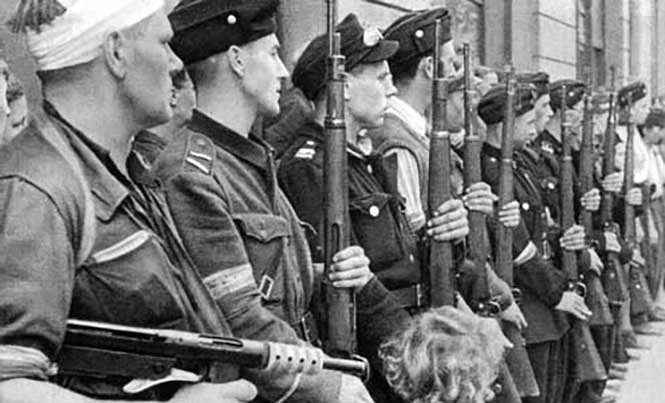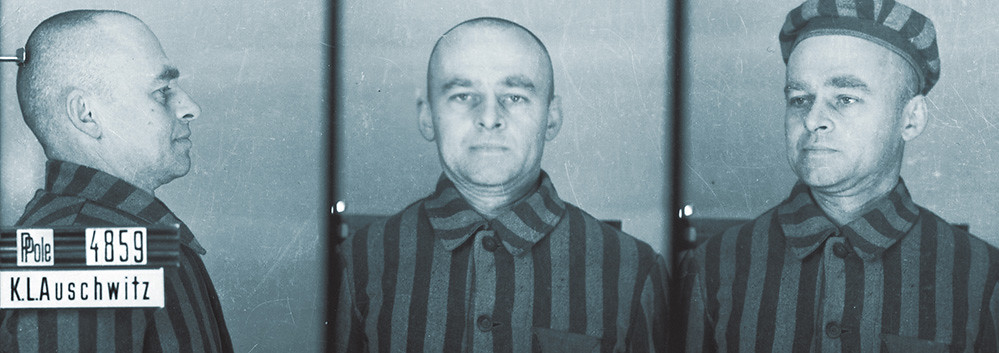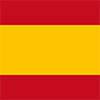The lesser-known aspects of life in Poland after the German-Soviet occupation of 1939
If we ask anyone about the consequences of the occupation of Poland in 1939, many will speak of the brutal repression of the Jews at the hands of the Germans.
The relief of the Poles to the Jews during the occupation
Certainly, the consequences of the occupation for the Polish Jewish population were terrible and are now known worldwide: of the 6 million Jews killed by the Nazis, about half were Polish Jews. Before the war, there were 3.3 million Jews in Poland, more than in any other country. Poland had been for centuries a country with a great religious tolerance, hence the Jews expelled from other European countries sought shelter there. Perhaps knowing that fact, the Nazis arranged that Poland was the only occupied country in which to hide Jews was punished with the immediate execution of all the inhabitants of the house. Despite this, many Polish Catholics hid Jews, even hiding Jewish children among their own children, risking the lives of their families.
Polish aid to the Jews was not marginal. In 300 villages the Poles managed to save all their Jewish neighbors; 450,000 Poles lent their homes for it, according to the American historian Richard C. Lukas, and 1.2 million Poles participated in actions to hide or rescue Jews, according to Professor Hans G. Furth. In fact, in 1942 the Żegota was formed in the underground, founded by the Catholic writer Zofia Kossak-Szczucka within the Armia Krajowa (Home Army): the only section of a resistance movement dedicated specifically to helping the Jews. The reprisals began in Limanowa, near Krakow, a few days after the invasion, on September 7, 1939, when the Nazis executed nine Jews along with a Polish Catholic postman, Jan Semik, who tried to protect them. As a consequence of the heroism shown by the Poles, to date of the 26,513 "Righteous Among the Nations" declared by Israel, the largest group -6,706-is that of the Poles.

German and Soviet soldiers fraternizing in Brest, where their forces were found during the joint invasion of Poland in 1939 (Photo colored by Mirek Szponar).
The killing of Poles at the hands of the Germans and the Soviets
A little known fact in the context of the horror of the Nazi genocide is that the Germans also killed 2.7 million Polish Catholics, including many priests. Furthermore, the effects of the occupation of Poland were not only felt in the western part that was in the hands of the Third Reich: remember that Stalin had invaded the eastern part of the country in September 1939, as a result of the secret protocol of the Ribbentrop-Mólotov Pact signed by the USSR and Germany a few weeks before. In the area occupied by the Soviets, more than 320,000 Poles were deported to Siberia, the Urals, northern Russia and other places in the USSR. Of these, 150,000 were executed or died during deportation.

German soldiers expelling Polish families from their homes in the county of Zamość in 1942.
In the area occupied by Germany, complete evictions were ordered from hundreds of villages, such as the one in Zamość county in 1942, which the Germans renamed Pflugstadt, deporting 116,000 Poles residing there. The objective of the invaders was to create a large colony to settle Germans in that territory. Many of the Poles in that county were sent to the concentration camps of Zwierzyniec, Auschwitz, Majdanek and others, and 50,000 were taken to Germany to work as slave labor. In many villages there were mass executions of Poles, leaving the populations totally destroyed.

A severely malnourished young man in the Warsaw Ghetto in 1941.
They tried to starve a whole people
On the other hand, the Germans tried to provoke famines among the Poles by drastically reducing their food supplies. If the German minority during the occupation received the equivalent of 2,613 calories a day, Poles barely survived with 699 calories. In the case of the Jews this amount was reduced to only 184 calories. Currently the WHO considers that an adult and healthy person consumes about 2,000 calories a day.

German soldiers kidnapping a Polish boy in the county of Zamość, Poland, in 1942.
The kidnapping of 200,000 Polish children
In addition, between 1939 and 1945 the Germans uprooted 400,000 children from their families in all the countries they occupied: 200,000 of them were Poles. In the case of the youngest ones, if they were in good health and the Nazis considered them racially fit, they were handed over to German families and Germanized. Many of the children kidnapped to be adopted by German families were rescued after the war, but most did not return. In the case of older children and those who were ill or were not considered racially desirable, they were used in forced labor or sent to concentration camps. In January I told you about the case of Czesława Kwoka, a girl from the county of Zamość who was sent to Auschwitz in December 1942, and died there on March 12, 1943. Like her, between 200 and 300 Polish children from that county They were killed in Auschwitz by lethal injections of phenol. Often they did not even wait for the child to die and they threw him, dying, into a pile of corpses. Others were used in medical experiments, which were perpetrated with 8-month-old babies and children and teenagers up to 18 years of age, 94% of whom died as a result of the horrific practices to which they were subjected.

Czesława Kwoka was a Polish Catholic girl of 14 years. She lived in the county of Zamość, from which she was deported in December 1942. She died in the Auschwitz concentration camp on March 12, 1943. Photo colored by Marina Amaral.
Germans and Soviets wanted to liquidate Polish culture
One of the most unknown aspects outside Poland about the occupation was its cultural dimension. Both Germans and Soviets were thoroughly employed in systematically destroying every vestige of Polish culture, assassinating intellectuals, artists, doctors, lawyers, professors, technicians, clerics and journalists, in a campaign aimed at liquidating Poland's cultural elite. The same name of the country was forbidden both in the zone occupied by the Germans and in that occupied by the Soviets. In addition, both occupants stole and destroyed works of art, closed most of the schools, universities, bookstores, museums, cinemas and theaters -preserving for the Germans those who remained open in the area occupied by the Third Reich-, and banned the printing of books in Polish and teaching in that language (German was imposed on one side, and Russian on the other). Many books in the Polish language were burned in both areas, and in the occupied by Germany it was forbidden to speak in Polish in public places. Of the 175 museums that Poland had, 70 were destroyed, and half of the 603 scientific institutions that the country had disappeared. Heinrich Himmler, head of the SS, came to order that the occupied Slavic peoples, among them the Poles, did not have to learn more than to write his name, to count (no more than 500) and to assume as a commandment of God that they should obedience to the Germans, for which they did not even have to learn to read.
To cope with this cultural genocide, the Polish resistance created the Tajna Organizacja Nauczycielska (Secret Organization of Education), which created clandestine schools in which a million and a half Polish children were educated in the primary stage, 100,000 secondary students and 10,000 university students (3,500 of them in the Warsaw area). The clandestine university studies included studies in Humanities, Theology, Medicine, Mathematics and Biology, including seminars and exams. This clandestine state continued to issue many academic titles with pre-war forms, which at the end of the war served their holders to continue their studies in Polish universities. In addition, the Polish resistance organized concerts and plays and produced clandestine publications to keep their culture and language alive. The main organization of the resistance, the Armia Krajowa (Home Army) even organized military academies for its scorecards.

Soldiers of the 1st "Wigry" Company of the AK "Kilinski" Battalion at a funeral in Zgoda Street, during the Warsaw Uprising.
The largest resistance organization of the Second World War
The Polish resistance did not limit itself to watching over culture. The Poles formed various clandestine organizations in order to carry out various war actions against the occupiers, from sabotage to attacks on German military installations and personnel. It was a very active resistance since the first weeks of the war. In fact, 43% of the total information received by British intelligence from continental Europe during the war came from the Polish resistance, including valuable information about the V-1 flying bombs and the V-2 missiles. One of the officers of the Polish resistance, Witold Pilecki, was the only volunteer prisoner in Auschwitz, where he infiltrated in September 1940 to report abroad what was happening there; their information about the Holocaust, unfortunately, was considered "exaggerated" by the allies, who ruled out attacking the camps to free the prisoners.

File of Witold Pilecki like prisoner of Auschwitz.
The size of this clandestine army was considerable: only Armia Krajowa (AK) had 400,000 members, the total size of the French resistance - it was, in fact, the largest resistance organization of the Second World War - and it was not the only Polish organization created to combat the occupiers. The AK even formed a group of special operations, the Cichociemni, and in August 1944 led the largest armed uprising against the Germans in an occupied country: the Warsaw Uprising, which remained active for two months, failing to obtain the expected help of the Russians. After the war, some 60,000 AK members were detained by the Soviets; many of them were tortured, and 50,000 ended up being sent to the Gulags in Siberia, as Stalin was suspicious of them being faithful to the Polish Government in exile. This led many members of the Polish resistance to continue the fight against the Soviet occupation. One of them, Witold Pilecki, the hero who had infiltrated Auschwitz, was executed by the Polish Communists on May 25, 1948.

Polish priests and laity moments before being killed by the Nazis in the Market Square of Bydgoszcz, on September 9, 1939. The Germans murdered 20,000 Polish women, men and children in this town at the beginning of the Second World War.
The anti-Catholic persecution unleashed by Germans and Soviets
The German and Soviet occupiers also sought to destroy the Christian roots of Poland. The Germans arrested and tortured thousands of Polish priests and religious and sent them to prisons and concentration camps, killing 1,811 of the 14,000 priests in Poland at the beginning of the war (the Church has already declared 108 martyrs). In addition, the Germans closed seminars, arresting the seminarians (because of this, the Church organized clandestine seminars, in one of them, the one in Krakow, Karol Wojtyla, the future Pope St. John Paul II, began his studies). They also confiscated the properties of the Church, outlawed all Catholic organizations and even banned religious songs and the reading of the Bible in public. In the area occupied by the USSR, priests and Catholic organizations were harshly persecuted.
Between a rock and a hard place
Although Nazi persecution against Jews and Poles was unparalleled in terms of brutality and number of victims, the situation in the Soviet zone was not much better. The Polish-Canadian historian Piotr Wróbel noted that "in the Soviet occupation zone, conditions were only marginally less harsh than under the Germans." In fact, some Jews who had fled in September 1939 to the Soviet zone to escape the Germans, months later wanted to return to the German zone to observe the hardships they still suffered, without knowing, surely, the terrible fate that awaited them. her return. At the end of the war the situation for many Poles did not improve substantially with the arrival of the Soviets: more than 100,000 Polish girls and women, from 4 to 80 years old, were raped by the soldiers of Stalin's Army, which theoretically came to "Liberate" the country. The damage caused by the Soviets was such that even today they are known as the "czerwona zaraza" (red plague) in Poland.
---
(Main photo: Czesława Kwoka was a Polish Catholic girl of 14 years. She lived in the county of Zamość, from which she was deported in December 1942. She died in the Auschwitz concentration camp on March 12, 1943. Photo colored by Marina Amaral)
|
Don't miss the news and content that interest you. Receive the free daily newsletter in your email: Click here to subscribe |
- Most read
- The 'hole' without civil flights around Paris during the opening of the Olympic Games
- Spain vetoes the Russian frigate 'Shtandart', which intended to reach Vigo, in all its ports
- The interior of the Statue of Liberty torch and the sabotage that canceled its visits
- The ten oldest national flags in the world that are still in use today
- The BNG boasts of the support of a terrorist group and a dictatorship at a public event
- The Russian intelligence document that sparked a hoax about French troops
- A virtual tour of ancient Rome in full color, just as it was in its heyday
 ES
ES





Opina sobre esta entrada: